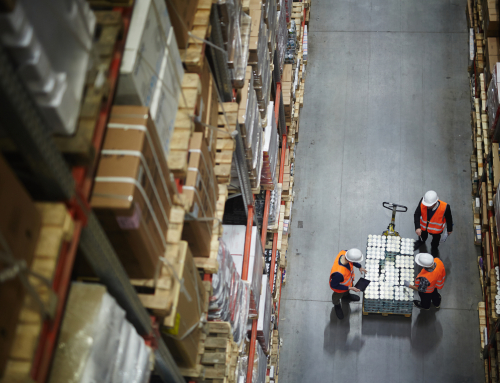Booming e-commerce industry and tight warehouse market call for flexible solution to manage returns
In a single day, on Jan. 2 — now known as “National Returns Day” — UPS processed 1.9 million returns, according to initial estimates. Not only does the figure represent a seventh-consecutive-year record, it also shows that managing returns is no small undertaking.
The huge influx of holiday returns is expected to reach $90 billion to $95 billion worth of merchandise, a 15% to 20% jump over 2018. E-commerce orders account for nearly half of those numbers, driving even more demand for warehouse space at a time when the warehouse vacancy rate in 19 U.S. industrial markets is less than the national average of 4.4%. Retailers now have to adjust to a reality in which products tend to spend more time in the reverse supply chain than in forward channels — while real estate is expensive and hard to come by.
Re-examining how businesses manage returns
If your business has put the primary focus on optimizing order fulfillment and forward logistics, you’re hardly alone. While 75% of retailers consider reverse logistics an important part of the supply chain, only 3% name it a key area of investment. Many have traditionally viewed reverse logistics as a drain on profits and a waste of products, overlooking its importance to your bottom line.
But from your customers’ point of view, how you manage returns has a major impact on whether they will shop from you again. A UPS “Pulse of the Online Shopper” study,” for example, revealed 73% of online shoppers say a satisfactory returns experience is the ticket to coming back for more.
The challenge is, as a CBRE report points out, that traditional distribution channels were not built to handle large volumes of returns. Searching for options, retailers have turned to 3PLs. But, drawn-out contract negotiations and minimum space requirements are not always ideal in a fast-moving e-commerce environment in which the need for warehouse space is often short-term and immediate.
Since it typically takes longer to manage returns — which lead to increased inventory, transportation, and warehousing costs — it pays to evaluate and refine every step of the reverse logistics process.
Ask yourself whether your current reverse logistics practices leave room for improvement:
- Does your base warehouse capacity remain empty for most of the year only so you can accommodate seasonal spikes in orders and returns?
- How much are you paying for unused warehouse space?
- How quickly can you find warehouse space for a surge of orders and returns?
- Would you describe your supply chain as static or flexible?
- How far do your returns have to travel for processing?
Enter: on-demand warehousing
A little over a year ago, Supply Chain Management Review predicted on-demand warehousing would be a “game changer” for the supply chain with “enormous potential.” Now, on-demand warehousing is a proven method for adding much-needed flexibility to your lineup of warehouse solutions. And just as on-demand warehousing can be leveraged to speed up deliveries, explore new markets, avoid fixed costs, and maintain brand control, it can transform your reverse logistics process and the way you manage returns.
Consider some of the benefits:
- Warehouse space and services— within hours. You need space, and you need it now. Warehowz’s cloud-based on-demand warehousing platform can help you find what you need within hours.
- Warehouse space and services — only when you need them. Post-holiday shopping. Post-seasonal sales. Some parts of the year require more warehouse space to accommodate returns than others. On-demand warehousing lets you secure and pay for the space and services you need, when you need them.
- Warehouse space and services — closer to your customers. Time is money. The farther your processing centers are from your customers, the more you pay for transportation and handling. By using on-demand warehousing to tap into unused space in your most lucrative locations, you can cut returns-management costs and improve ROI.
Summing it up
The rising tide of e-commerce shopping shows no sign of leveling off. And more orders also mean more returns. Retailers that use a targeted, on-demand warehousing solution will be better equipped to handle all aspects of reverse logistics.
We are here to help. Contact Warehowz to learn more.
Read more:
Unwrapping the numbers that matter in on-demand warehousing
How CRE brokers can groom leads with an on-demand warehousing partner
Estes partnership paves way for client access to cross-docking facilities



